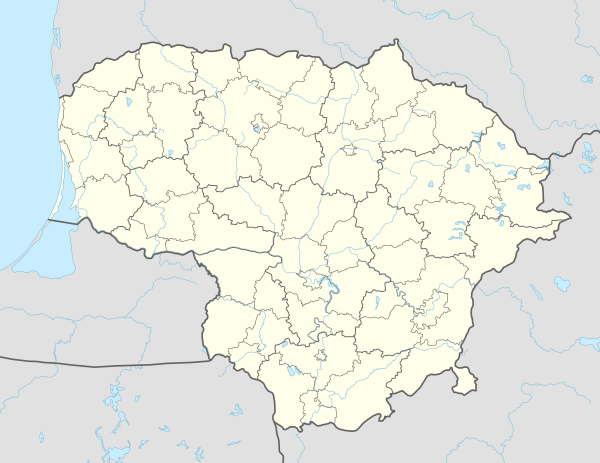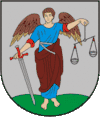Virbalis
| Virbalis | ||
|---|---|---|
| City | ||
| ||
 Virbalis Location of Virbalis | ||
| Coordinates: 54°38′0″N 22°49′0″E / 54.63333°N 22.81667°ECoordinates: 54°38′0″N 22°49′0″E / 54.63333°N 22.81667°E | ||
| Country |
| |
| Ethnographic region | Suvalkija | |
| County |
| |
| Municipality | Vilkaviškis district municipality | |
| Eldership | Virbalis eldership | |
| Capital of | Virbalis eldership | |
| First mentioned | 1529 | |
| Granted city rights | 1593 | |
| Population (2005) | ||
| • Total | 1,314 | |
| Time zone | UTC+2 (EET) | |
| • Summer (DST) | UTC+3 (EEST) | |

Virbalis (![]()
History
It is frequently mentioned in historical as well in modern literature. It was the site of the formation of the Wierzbołów Confederation by Paweł Jan Sapieha in 1655 during the Deluge (part of the Second Northern War). Later it was the first station for stagecoaches and later the first railway station in the Russian Empire when leaving Germany.
When in 1861 a branch of the Saint Petersburg – Warsaw Railway was built from Vilnius to the Prussian border, where it was linked to the Prussian Eastern Railway, the Russian border station near the village of Kybartai was named after the neighbouring town of Verzhbolovo. Meanwhile, Kybartai has become a town bigger than Virbalis, and the Lithuanian border station is now called Kybartai, too. The German station of the Prussian Eastern Railway on the western side of the frontier was Eydtkuhnen; today it is the Russian border station and called Chernyshevskoye (Russian: Черныше́вское).
Between mid-July and autumn 1941, an Einsatzgruppen of German SS troops aided by local Lithuanian auxiliary police from Virbalis and Vilkaviškis slaughtered 670–700 Jews from Virbalis and the nearby town of Kybartai in several mass executions. A memorial was built on the site of the massacre.[1]
References
- ↑ "Mass Murder of the Jews in Virbalis". Holocaust Atlas of Lithuania. Retrieved 1 April 2016.
| Wikimedia Commons has media related to Virbalis. |

